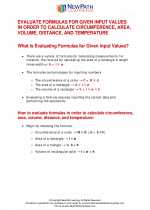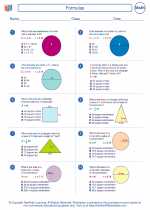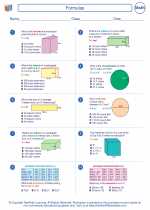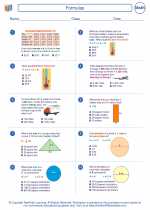Angles
An angle is formed by two rays that share a common endpoint, called the vertex. Angles are typically measured in degrees and are classified based on their measure.
Types of Angles:
1. Acute Angle: An angle with a measure greater than 0 degrees and less than 90 degrees.
2. Right Angle: An angle with a measure of exactly 90 degrees.
3. Obtuse Angle: An angle with a measure greater than 90 degrees and less than 180 degrees.
4. Straight Angle: An angle with a measure of exactly 180 degrees.
5. Reflex Angle: An angle with a measure greater than 180 degrees and less than 360 degrees.
Angle Relationships:
1. Vertical Angles: When two lines intersect, the angles opposite each other are called vertical angles and are congruent.
2. Adjacent Angles: Adjacent angles are angles that have a common vertex and a common side, but do not overlap.
3. Complementary Angles: Two angles are complementary if the sum of their measures is 90 degrees.
4. Supplementary Angles: Two angles are supplementary if the sum of their measures is 180 degrees.
Measuring Angles:
Angles are typically measured using a protractor. To measure an angle, place the vertex of the angle at the center of the protractor and align one of the rays with the 0-degree mark. Then, read the measure where the other ray intersects the protractor.
Study Guide:
Here are some key points to remember when studying angles:
- Understand the definition of an angle and its components (rays, vertex).
- Be able to identify and classify different types of angles based on their measures.
- Recognize and apply angle relationships, such as vertical angles, adjacent angles, complementary angles, and supplementary angles.
- Practice using a protractor to measure angles accurately.
- Work on solving problems involving angles, such as finding unknown angles in geometric figures.
Understanding angles is a fundamental concept in geometry and is crucial for various mathematical applications. I hope this study guide helps you in mastering the topic of angles!
.◂Math Worksheets and Study Guides Sixth Grade. Formulas

 Activity Lesson
Activity Lesson
 Worksheet/Answer key
Worksheet/Answer key
 Worksheet/Answer key
Worksheet/Answer key
 Worksheet/Answer key
Worksheet/Answer key
